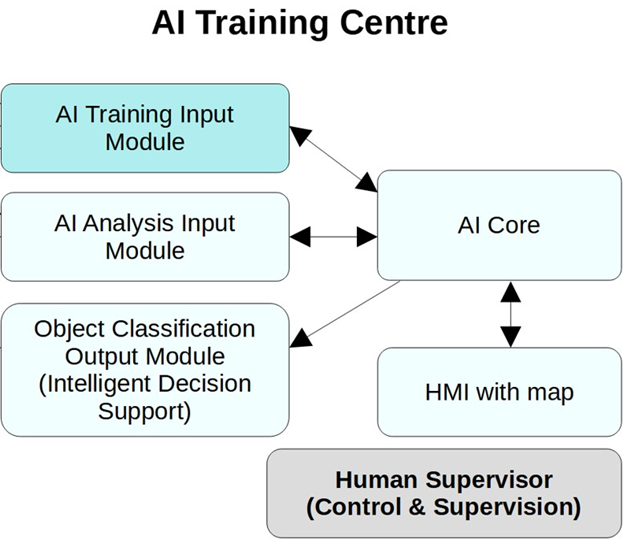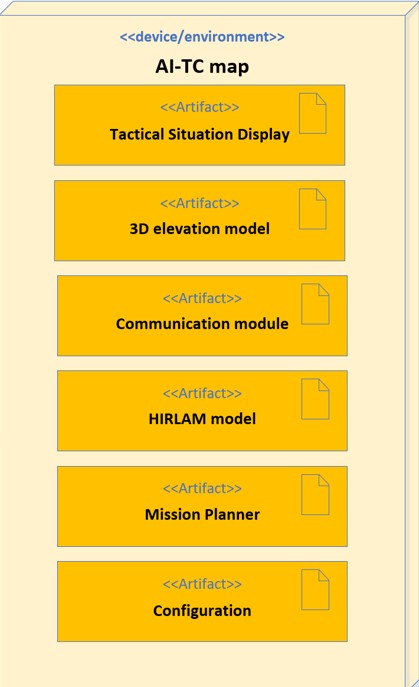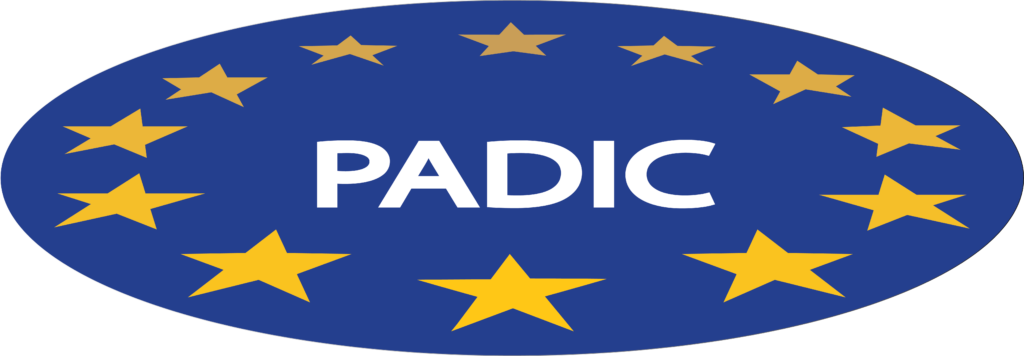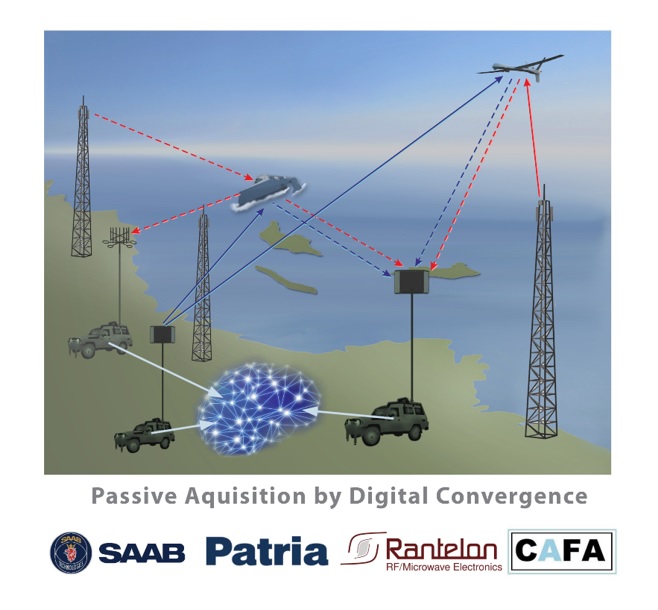CAFA Tech AI Training Centre
CAFA AI-TC is a system developed for analyzing information from sensors, which consists of powerful GPU computers and software modules. AI-TC contains the following modules, which are described in the figure below.
AI Training Input module: This module involves collecting and importing data from various sources into the system for data processing and analysis. It can include mechanisms for batch and real-time data processing. After data is ingested, it’s stored in databases. This storage can be on-premises or in the cloud, depending on the architecture.
AI Analyses Input Module: Data often needs to be cleaned, normalized, and transformed into a format suitable for training AI models. This step can involve handling missing data, encoding categorical variables, and scaling or normalizing numerical data.
AI Core. Model Training is the core of an AI Training Centre, where machine learning algorithms learn from the data. This can involve selecting algorithms, tuning hyperparameters, and using techniques like cross-validation.
Model Evaluation: After a model is trained, it’s evaluated to determine its performance. Metrics such as accuracy, precision, recall, and F1 score are commonly used for classification tasks, while mean squared error or mean absolute error might be used for regression tasks.
Object Classification Output Module (Intelligence Decision Support). Model Deployment: Once a model is trained and evaluated, it’s deployed into a working environment. This can involve setting up APIs for real-time predictions or batch processing systems.
Monitoring and Maintenance. After deployment, models need to be monitored for performance decay over time. Retraining pipelines may be set up to periodically update the model with new data.

Human Machine Interface (HMI) with map. AI Training Centre has interfaces for users to interact with the system, such as dashboard and map for monitoring model performance and tools to use in the model training process.
Security and Compliance: CAFA AI-TC data and models comply with relevant EU laws and regulations, such as GDPR.
Integration and APIs: The AI-TC architecture is designed to integrate with external systems through APIs for both incoming data and outgoing predictions.
AI-Training Centre map contains the following modules, which are described in the figure below.

The screenshot below describes the classification of moving objects by CAFA AI-TC based on behavior and movement trajectory.



The European Defence Industrial Development Program project “Passive Acquisition by Digital Convergence” (PADIC) 2021-2024
PADIC will develop a coastal radar network system
The European Defence Industrial Development Program project “Passive Acquisition by Digital Convergence” (PADIC) will develop a coastal radar network system with an open architecture, connecting passive, digital sensors of different types. Passive radars use reflections from signals from TV and radio stations, mobile network base stations and added transmitters to detect objects on land, at sea and in the air.
PADIC will study, design, prototype and test a coastal radar network system in response to emerging threats by further developing state-of-the-art sensors that are spectrally non-congesting during peacetime and sustainable and immune against attack attempts during conflicts. The project will make use of low-cost and commercially available technologies and components.
2022
In the first year (2022), Functional Requirements Definition will be established, based on scenario analyses. Moreover, a System Concept and Architecture will be developed.
2023
In the second year (2023), the System Design and Developments and System Level Integrations will be done and a prototype will be developed.
2024
In the third year (2024), the PADIC system will be tested and demonstrated in Baltic coast environments.
What is the central problem?
A central problem with ground-based radars is their low life expectancy after conflict onset, since they are easily acquired by radar-detecting sensors, while being considered expensive when used for peace-time operations. Even worse, surging radar costs increases the high-value asset vulnerability, and the resulting sparse deployments leaving gaps for an adversary to exploit: during conflict by means of e.g. cruise missiles and UxV drones, and in peace-time by smugglers, insurgents and traffickers using dangerous transportation means.
CAFA Tech contribution: Drone detection radar and AI Centre technology
